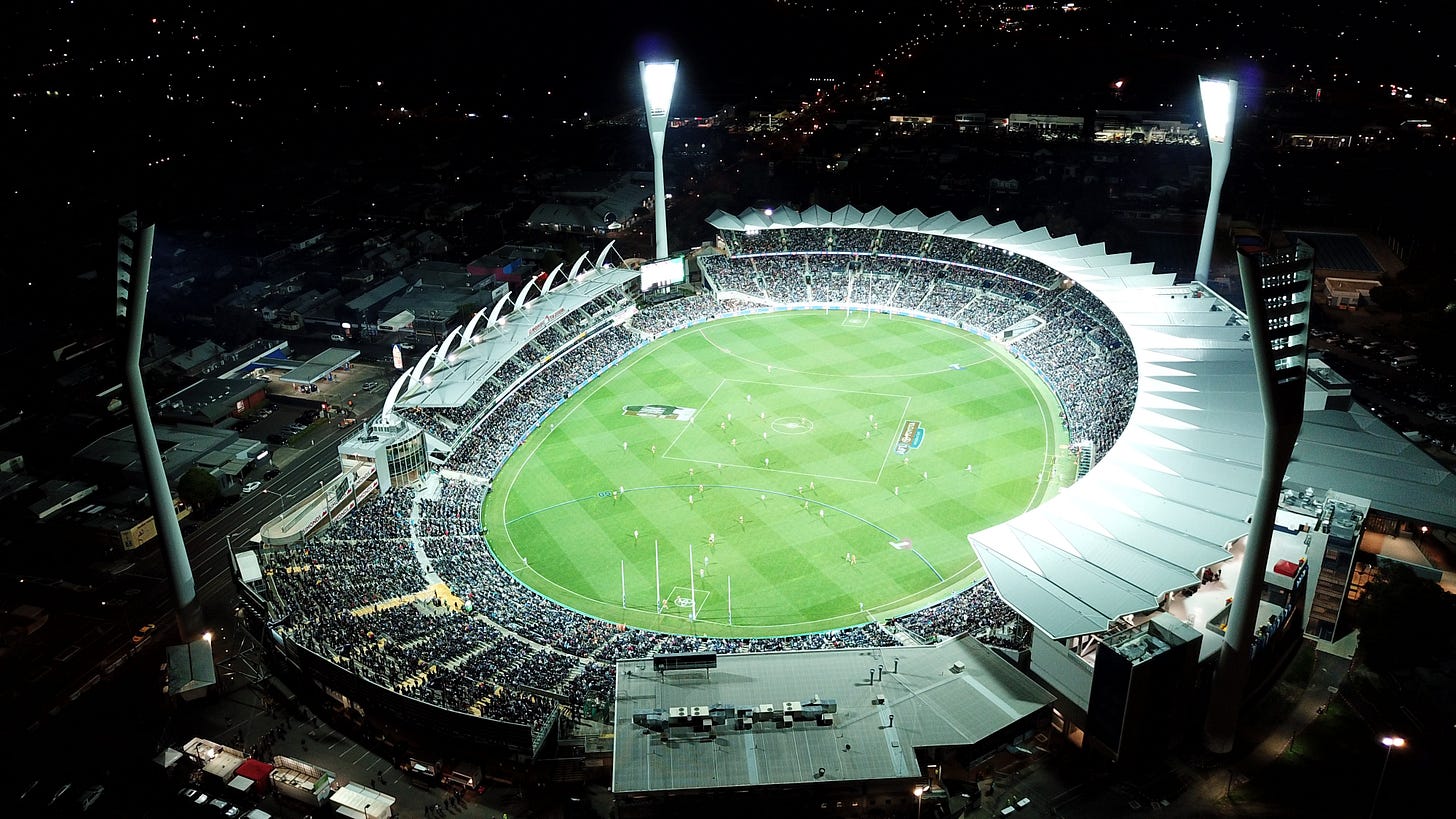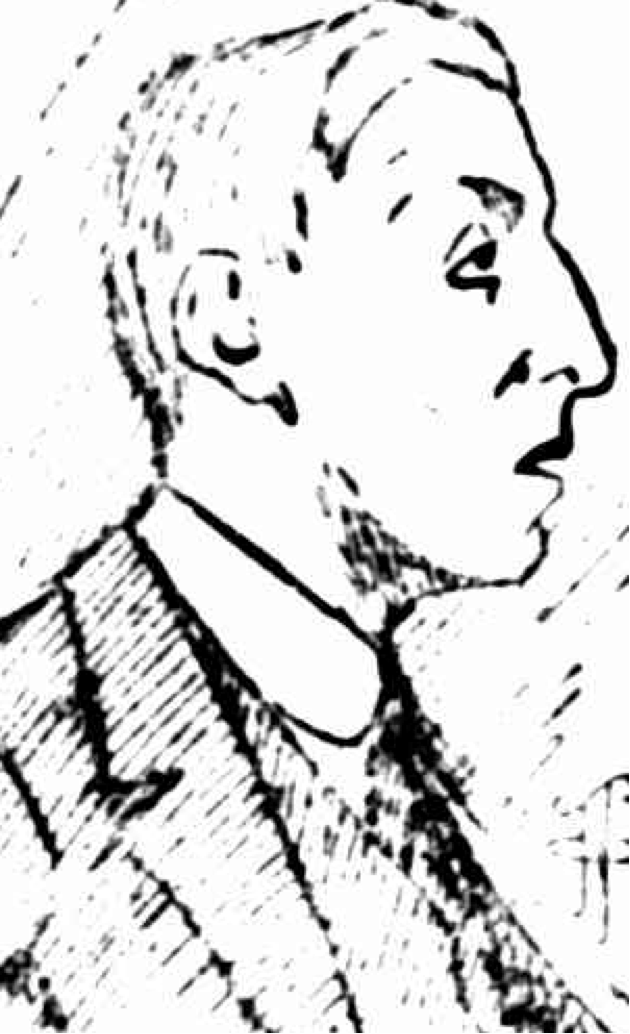Issue 5: The life of Arthur Brennan - Footballer, Bigamist and Murdered
As the end of September rolls around, for those of you in Australia - it is the Grand Final season of the Australian Football League. This year it is being held on Saturday 24 September. It is between Geelong Cats vs Sydney Swans. Personally, I don’t follow the footy; however, I am interested in the case of Arthur Brennan, an Australian rules footballer.
Born in Abbotsford, Victoria on 2 March 1881, he was the son of William and Mary Brennan. He was part of a large family being one of three sons, who also had eight daughters. He wasn’t the sole family to play football. Notably, his brother, Owen Brennan, played in the VFL (Victorian Football League) for Collingwood 11 times in 1900. The other brother, William Jr, played for Northcote and Port Melbourne. Arthur played his only senior game for St Kilda during the 1901 VFL season when he was 20 years old. For anyone interested, it was round 15 at the Junction Oval. They lost against Fitzroy by 72 points. Though this was the end of his professional career he had also played in the VFA for a number of years with multiple clubs that included Richmond, Port Melbourne (with his brother), and finally Footscray (now known as the Western Bulldogs).
There is not much known about his life, but at some point, he got married. In fact, he got married - twice because on 29 September 1914 he was arrested on the charge of bigamy. His trial was set for 7 October 1914.
Bigamy
An article in The Herald, published on 30 September 1914 read:
‘Arthur Brennan, at the City Court today, was charged that, having married Catherine Pout at Fitzroy on May 7, 1902, he awfterward unlawfully married Alice Mary Patton, at Fitzroy on June 26, 1910, his former wife being alive. He was remanded to Fitzroy Court on October 7. Bail was fixed at one surely 100 pound, and Brennan’s own bond for a like amount.
Detective Hawkins said that he arrested Brennan on warrant yesterday, in Exhibition Street, City.’
At the trial, witnesses were brought forward to state when they married the two pairs of couples. The Rev. Henry Heathershaw had married the first couple but stated that Brennan had left her after two years. Alice Mary Patton, the second wife, gave evidence about her marriage ceremony that was conducted by Rev. Albert James Abbott. She also mentioned that they had a child that died in infancy.
On the advice of his solicitor, Brennan who had pleaded ‘not guilty’ changed his plea to guilty. He was sentenced to 12 months imprisonment.

Military Service
Though in 1915, Brennan enlisted in the First Australian Imperial Force, this was a career that never really took off, at least not at first. Apart from answering that he was not married the the form - he entered camp at Royal Park in 13 September.
An article in The Age, published 21 October 1915 read:
At Carlton court yesterday [viz., 20 October 1915], Arthur Brennan and Catherine Brennan, a married couple, were each fined 20/, in default seven days' imprisonment, for having unlawfully assaulted Ellen Steele.
Complainant, a resident of Pelham-street, said accused assaulted her in the street on 19th [October], the male accused hitting her on the side with a policeman's baton.
Brennan, who denied the charge, said he found the baton in Little Bourke-street.
On a charge of wilfully damaging the property of William Steele, engineer's laborer, by breaking the panel of the door and breaking nine panes of glass, Arthur Brennan was also fined £3, in default one month's imprisonment; and on a charge of having used insulting words, Catherine Brennan was fined 20/, in default seven days in gaol.
Fast forward to late November, Brennan was discovered to be absent without leave. He was ‘struck off strength of [the] Royal Park Camp as a deserter on 30.11/15 - a decision later confirmed by a Court of Inquiry - and a warrant was issued for his arrest. The warrant wasn’t executed and was withdrawn on 4 March 1918. On 27 March 1918, he reenlisted, resuming his service on 29 April 1918. He listed his wife, Catherine Brennan as his next of kin.
He left to serve Europe and in August 1918, while he was in England, he went awol (absent without leave). He was found and imprisoned, without pay for 28 days. In September 1918 in France, he was imprisoned for three days without pay for "conduct to the prejudice of good order and military discipline in that he discharged firearms in his hut on 23.9.18". Finally, from 26 October 1918, he was once more was absent without leave until he was arrested on 18 November 1918.
Court-martial
Brennan and a fellow soldier, Private Patrick McGrath (51412), were arrested in November 1918, and put on trial, in France, after they had forcibly entered a small restaurant called an estaminet, in Saint-Vaast, on the night of 29 October 1918. Both were found guilty of "committing an offence against the property of an inhabitant of the country in which he was serving”. They were both sentenced to two years imprisonment with hard labour.
Brennan served only part of his sentence at the Northampton Military Prison, in England. He was released on 18 June 1919. This was due to the powers that had now been granted under the "Suspension of Sentences" provisions (i.e., Regulations 643A and 643B) of the Australian Military Regulations under the Defence Act 1903–1915 that had come into operation on 7 March 1917. He was returned to his regiment and repatriated to Australia, arriving in Melbourne on 20 August 1919.
Murder
The final time Brennan would appear in the media would be to report his murder. At the time he was living with 5 of his sisters. Their neighbour was Norah Power, and they had an arrangement very similar to one that would be today. It was that if she was alone and needed assistance, she could knock on the wall which divided their homes, to alert the Brennan household of needing help.
On the night of 12 September 1931, Brennan became aware that someone was trying to break in next door after he had heard Power knock. He headed out across his garden towards her residence. It was there that he confronted a man that he saw standing on her verandah. The burglar attempted to bluff his way out of the situation by saying he was there to visit a friend.
Knowing that was not the case, Brennan blocked the path of the man as he was trying to make an escape. At the garden gate, a scuffle broke out, during which Brennan was shot in the chest by a small automatic pistol that the burglar had been carrying. He had managed to pull it out of his overcoat with his free arm. Brennan died on the footpath within minutes of being shot. Although two bystanders chased the gunman, he alluded them and got away.
An investigation lead to the belief that the gunman was between the ages of 25 to 30. It was found that he had been seen earlier in the day scoping out the area. After searching for three months the City Coroner gave the finding that Brenan had been murdered by a “person unknown.”
Quite a while later, and after they had both died - the police identified two known criminals as Brennan’s killer. First, there was John Gepp, who upon his death the police were certain he was the person they were looking for. However, on 15 April 1932, the Chief Commissioner of the Victoria Police, Thomas Blamey, formally announced that Gepp was no longer considered to be the murderer.
The same day that Thomas Blamey announced that Gepp wasn’t a suspect, they announced that "as a result of investigations by detectives it had been clearly established that the murderer of Arthur Brennan in Fitzroy on September 12, 1931, was Reginald James Barker". Upon hearing this, Barker’s mother visited the office of The Herald on 18 April 1932. Here she provided a medical report which showed her son had been at St Vincent’s Hospital on multiple occasions. Of particular interest was that Barker had received an X-ray the day before Brennan was shot. The x-ray revealed that there was an old fracture that had happened some weeks before to his right ankle. His foot had subsequently been placed in plaster and he was given crutches.
No further action was taken by the police.
The case remains unsolved.




